This is a thick book. Why is this book so thick? It’s either loaded with fluff or has too many white pages. Alas, it is thick, but its physical pages are thicker than the average illustrated book, plus it’s loaded with fun, easy-to-understand, STEM facts about the evolution and process of rubber. To those first reactions I say, don’t be intimidated by its thickness. Instead, just enjoy the fact that Bounce! A Scientific History of Rubber is able to create a non-fiction, linear story with STEM nuggets woven in that young readers won’t be turned off by. It can be challenging to get young readers to accept illustrated books that don’t have unicorns or animals in it, thus the first hurdle towards getting them in the book is not getting in the way.
Bounce! A Scientific History of Rubber does not get in the way of kids enjoying the book. That is an accomplishment because many illustrated books especially those with a STEM bent get in the way of kids enjoying them through one way or another. Kids probably haven’t thought about the creation of rubber, but they use it daily to play with, keep them dry, swim with, or rely on it as transportation. This illustrated book has something in common with those like-minded biographies in that it has the task of making the stereotypically kryptonite subjects affable to elementary school audiences.
Bounce! sucks in young readers with the illustrations on the cover. I see a rubber duck, a person wearing a diving suit, a dude paddling a canoe, and an equal number of DNA helixes that are spread out on it. Kids won’t know what the double helix on the cover, or in the book for that matter, is made up of, but they know it has something to do on a cellular level. But that’s the deep end of the pool, Bounce! doesn’t start there, it wades in slowly, literally by showing a pair of novelty alligator rain boots and a young girl floating on an inner tube.
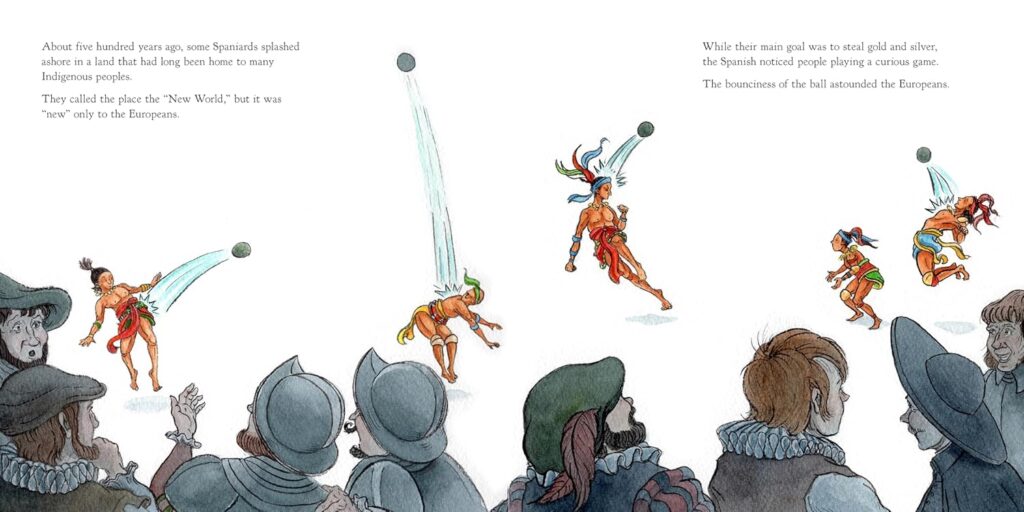
The text on the first two pages is simple and presented in an onomatopoeia format with the s-t-r-e-t-c-h and bounce of rubber’s texture is moving over them. It then goes on to show latex being excreted from certain trees in Central America, mixed with the juice of a special vine, and then boiled. Raise your hands if you know that’s how rubber, in its most basic form, was produced. That’s important because European explorers had never seen a bouncy substance like that. Their soccer balls were leather clumps with feathers or animal bladders with dried vegetables inside them, which made playing basketball very challenging.
Thus, when European explorers brought back the bouncy stuff from Central America it was embraced. The Spanish even brought back a handful of Native Americans who were very adept at playing one of the first games of hacky sack. At the time the European languages didn’t have a word for ‘bounce’, so once that was created the latex stuff had free reign to expand creatively. This new frontier allowed people to erase the mistakes that had previously only been able to be scratched out. They put two rubber circles together so that scientists could do experiments with gasses, positioned some between a thin jacket for a raincoat and put them on your feet for boots.
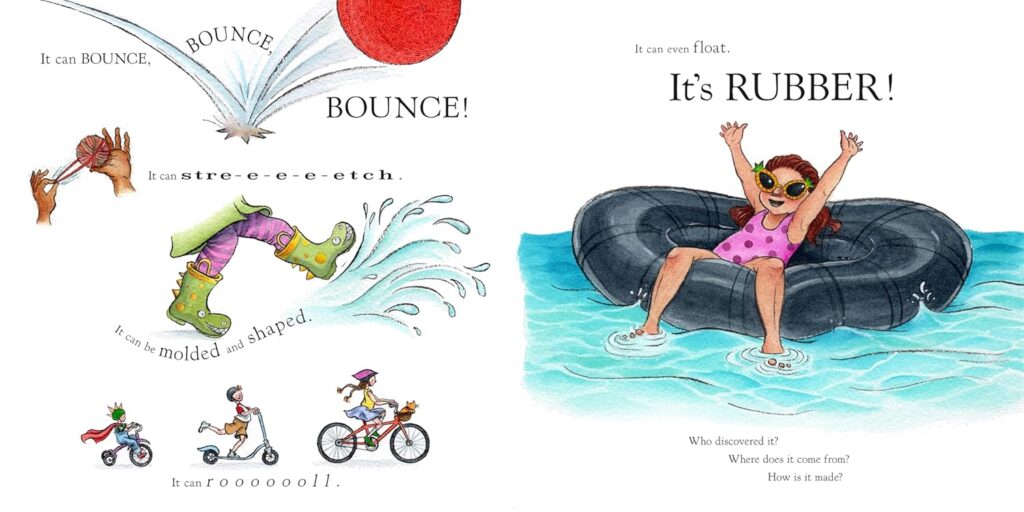
However, summer came along and dashed rubber’s hopes of soft, bouncy, worldwide domination because it got sticky or melted. In winter their new protective surfaces got hard and cracked easily. About this time in America, Charles Goodyear was tinkering with ways to solve these problems and through experimenting with various ways found out that heating a sulfur and rubber mixture created a new substance that held its mettle. Goodyear sent his new rubber compound across the pond to English chemist, Thomas Hancock, and the process was henceforth named vulcanization.
As a historical side note, they filed for a patent at the same time, with it ironically going to Hancock for the credit. Goodyear is more commonly associated with a huge use of rubber, one that supports people in the tires that they have on their cars. That’s the narrative story, but in between aspects of the story the scientific elements are shown, like what chemical compounds make rubber stretch, what makes rubber roll or other STEM-minded questions.
The effect is a pause that lets readers into the fact that there is legitimate STEM intelligence in the creation of rubber, and in Bounce! A Scientific History of Rubber. It’s not too much that will allow young readers to think this is a reference book. It’s also not too much information that gets in the way of its entertainment. This has its cake and is able to eat it too. Bounce! is entertaining, but also tells a linear story with STEM facts and plants those seeds of knowledge in young audiences that some people think are too young for them. They’re not, and the book will go on to make kids smile, laugh and ponder about things they previously didn’t know and think about the discoveries or innovations that their generation can accomplish. It works as well for young kids during story time as it does for older elementary students doing a short research paper.
Bounce! A Scientific History of Rubber is by Sarah Albee and illustrated by Eileen Ryan Ewen and is available on Charlesbridge.

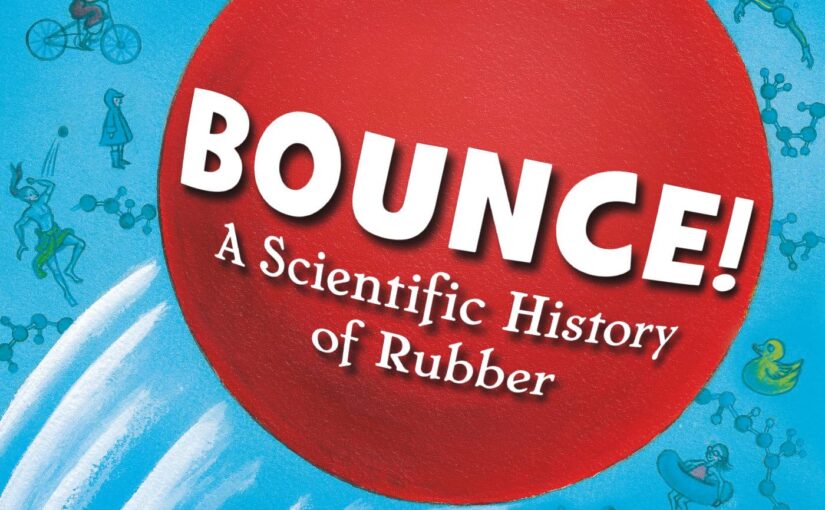
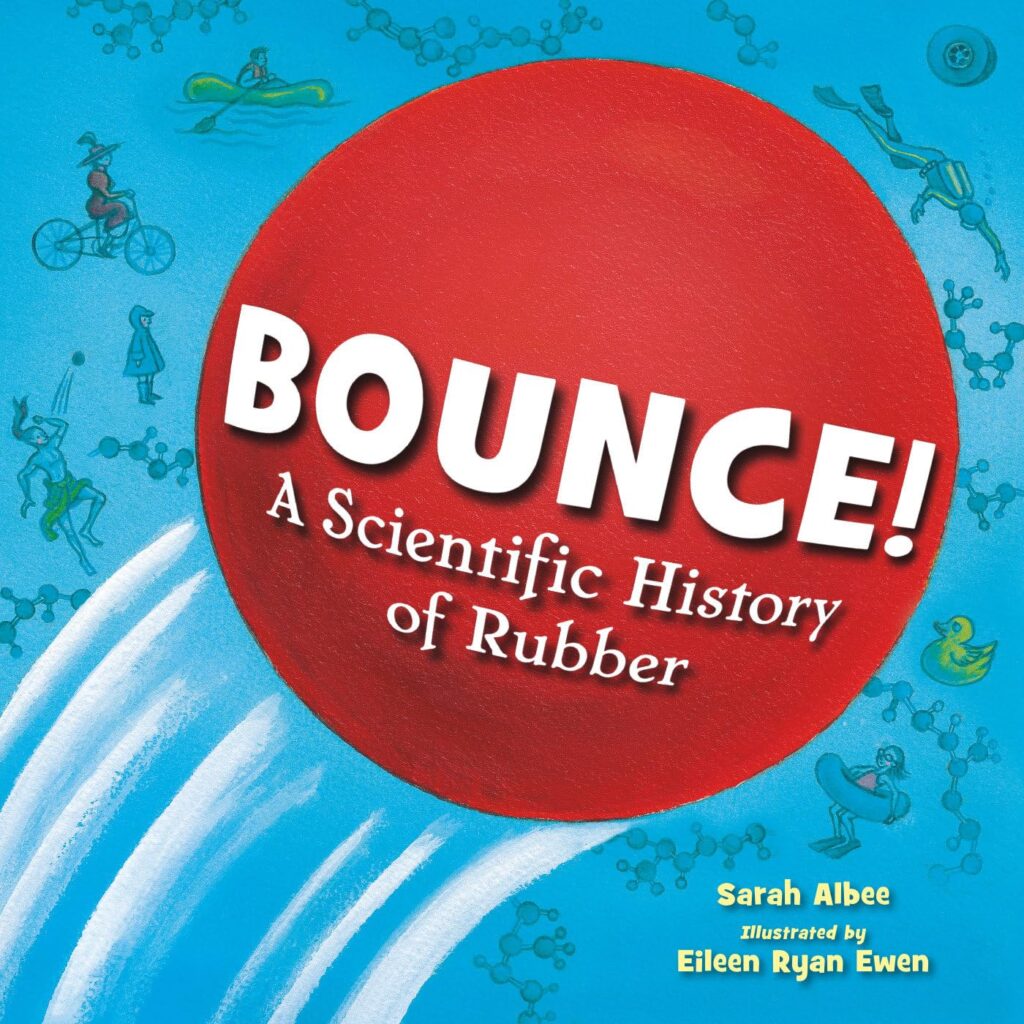
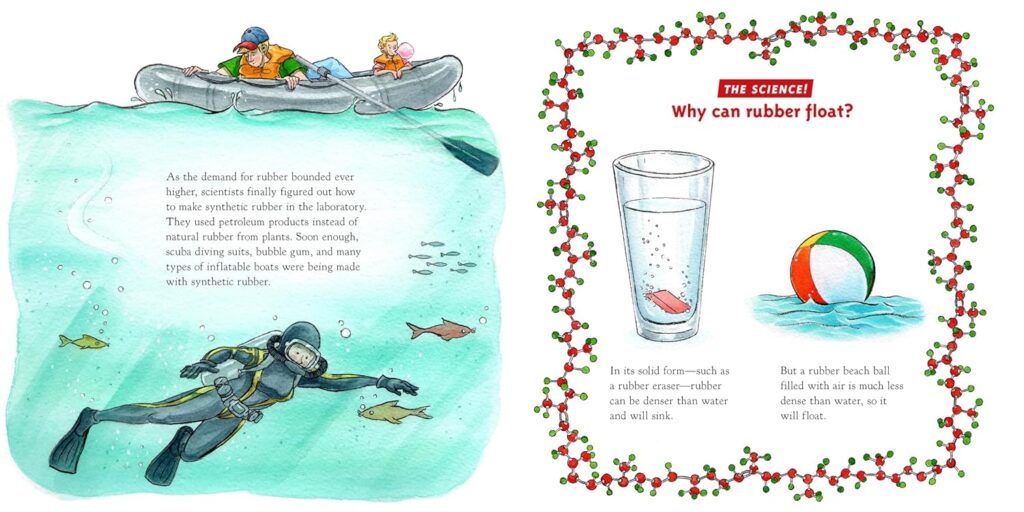



 Facebook
Facebook Twitter
Twitter Flickr
Flickr GooglePlus
GooglePlus Youtube
Youtube